I’m writing because 8 months ago I got Covid and since then I have been very sick. My main symptoms are fatigue, exercise intolerance/pem, many histamine issues slash food intolerances, upset GI with alternating diarrhea and constipation, weight loss, headaches, anxiety and depression, panic attacks….the list goes on.
I know something is wrong with my gut but I’m having trouble fixing it because my diet is so limited and I have so many reactions to things. I know a limited diet is not good but I also feel so much worse when I eat certain foods especially carbs. I think I might have SIBO. I uploaded my profile to you site and would love any help. I’m giving permission to share.
Analysis
This person has added symptoms and we see a good match of bacteria shifts to reported symptoms

Further down, we have many more matches
- Immune Manifestations: new food sensitivities ✅ – [86.7%]
- Neuroendocrine Manifestations: marked weight change ✅ – [84.6%]
- Post-exertional malaise: Post-exertional malaise ✅ – [84%]
- DePaul University Fatigue Questionnaire : Does physical activity make you feel worse ✅ – [82.7%]
When there are many reported symptoms to predicted symptoms, then I usually run with two methods. The second gives probiotics only:
- Beginner-Symptoms: Select bacteria connected with symptoms.
- Probiotic computed from Kyoto Encyclopedia of Genes and Genomes compounds
Because of the food issues, I will be explicitly going to the food menu feature.
Histamine Bacteria
Looking at the Microbiome Tree, we see why histamine may be an issue
- Gluconobacter oxydans – 100%ile
- Parabacteroides merdae – 29%ile
Results
We have 69 symptoms marked resulting in 44 bacteria flagged. This is common and shows that there is often bacteria overlap between symptoms. The other factor with symptoms is a person’s DNA.
The best suggestion is walnuts. Looking at the probiotics, I was not surprised at the top ones:
- bifidobacterium infantis {B. infantis}
- bifidobacterium pseudocatenulatum {B. pseudocatenulatum }
- Limosilactobacillus reuteri {L. Reuteri}
Why am I not surprised…. because my own post COVID symptoms cleared rapidly when I did high dosages of fresh Bifidobacterium (manufacture date was the month before). The top of the list is below.

On the avoid list are many items that appear related to carbs (fiber) — what this person reacts to

My take away for no known-risk probiotics are these items suggested
- Maple Life Science™ / Bifidobacterium infantis – 50 BCFU/day
- Maple Life Science™ / Bifidobacterium breve – 50 BCFU/day
Clicking on the Food Menu Planner Button

KEGG Probiotics
The results very typical for ME/CFS and Long Covid

- E Coli Probiotics — providing some 36 missing compounds
- mutaflor / mutaflor – 100x higher dosage than the next one. You may herx/die off badly from it
- symbiopharm / symbioflo 2
- negative on consensus report — N.B. We have very few studies for these probiotics.
- Bacillus Subtilis Probiotic (positive on Consensus report)
- Prescript-Assist®/SBO Probiotic – not on suggestion list
- symbiopharm / symbioflor 1 – enterococcus faecalis (positive on Consensus report)
- Various Bifidobacterium above were on the list too.
Foods
The “many histamine issues slash food intolerances” causes me to suggest looking at the foods suggested above, especially those that are not in a person’s typical diet. I.e. Walnuts, Acai, Burdock Root, Asparagus, Rye bread (100% – not wheat+rye mixture), Beets, papaya, etc.
But wait! Those are based on studies of those explicit foods. When we go to the associated food sites, we see 116 nutrients identified as to take or avoid
The top to take are:

And to avoid:

With a quick list of food to take:

And to Avoid

My Approach if this was me
I would see about getting a bottle of only Bifidobacterium species probiotic as soon as possible to try to kick start things (i.e. a local health food store, or online with quick delivery). There is a risk that there may be no living or barely living bacteria in this bottle (background). So fingers crossed.
At the same time I would order bottles of the following (which may take 3-4 weeks to arrive). Direct links to Maple Life Science’s Ebay site are linked below.
- Bifidobacterium infantis, 60 capsules $8.83
- Bifidobacterium Breve, 60 capsules $8.83
- Bifidobacterium Longum, 60 capsules $8.83
- Bifidobacterium Bifidum, 60 capsules $8.83
- Lactobacillus reuteri 60 capsules $8.83
Those prices include shipping, so $44.00 total (which may be close to the price of the local purchase bottle). They ship worldwide! Why this source? My experience has been very good with them. Manufacture date is usually within a few weeks of shipping. Everyone that I have tried has had “kick”, that is, I see changes of stools (shape, size, frequency) and changes of fart smells within days of starting. I would start with just one, one capsule only and then work up to 5/day. Once the first bottle is empty, start the next bottle with the same pattern.
Next, I will try to incorporate as many of the above things — especially items that are not usually in your diet. With that, check the to avoid and reduce as much as is practical.
After 2-3 months, do another sample with the same firm — things are expected to change significantly and a new set of suggestions should occur.
Postscript – and Reminder
I am not a licensed medical professional and there are strict laws where I live about “appearing to practice medicine”. I am safe when it is “academic models” and I keep to the language of science, especially statistics. I am not safe when the explanations have possible overtones of advising a patient instead of presenting data to be evaluated by a medical professional before implementing.
I cannot tell people what they should take or not take. I can inform people items that have better odds of improving their microbiome as a results on numeric calculations. I am a trained experienced statistician with appropriate degrees and professional memberships. All suggestions should be reviewed by your medical professional before starting.
The answers above describe my logic and thinking and is not intended to give advice to this person or any one. Always review with your knowledgeable medical professional.




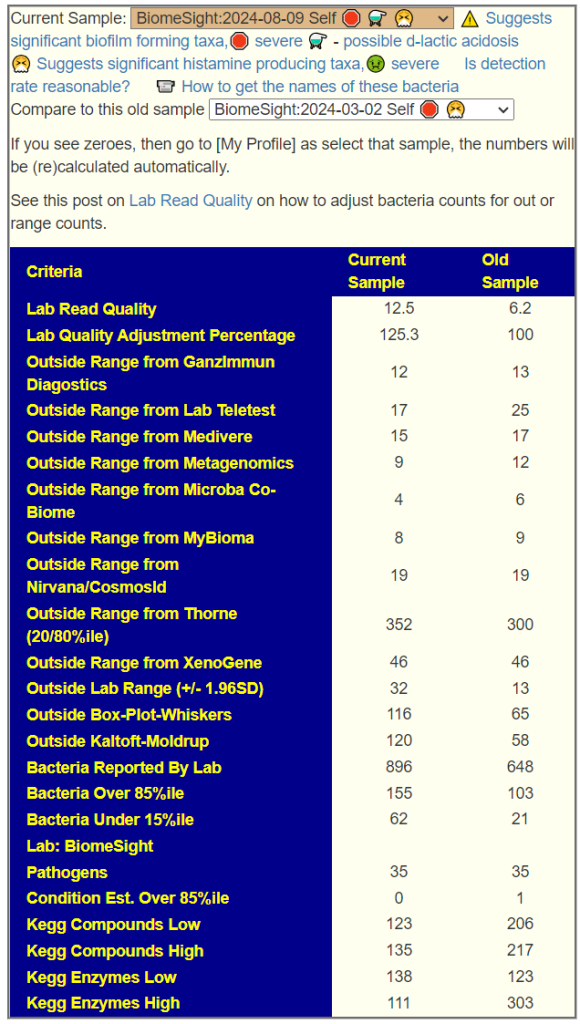




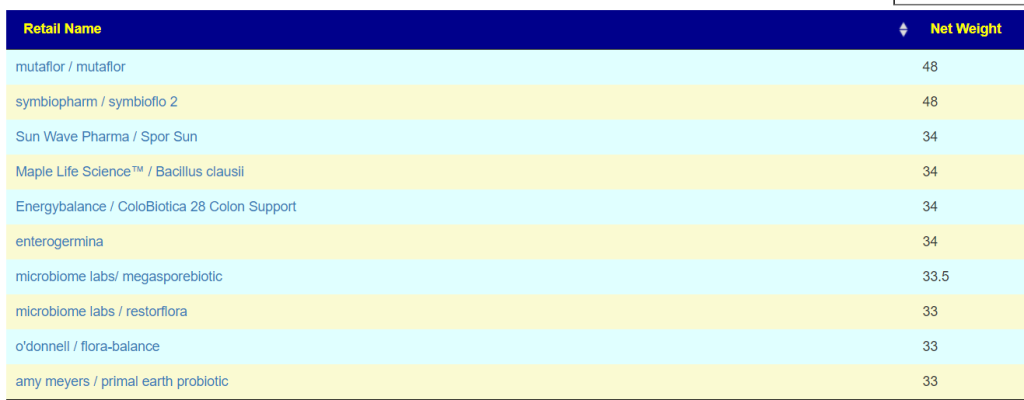










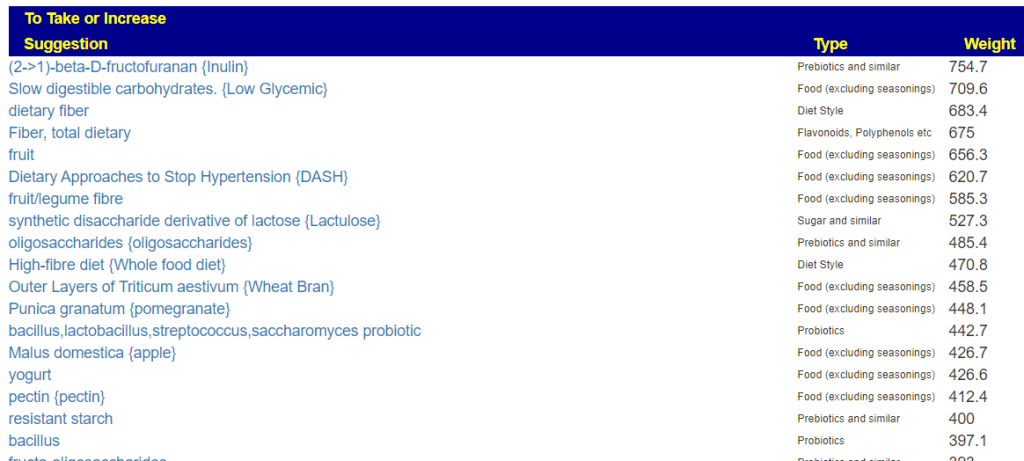

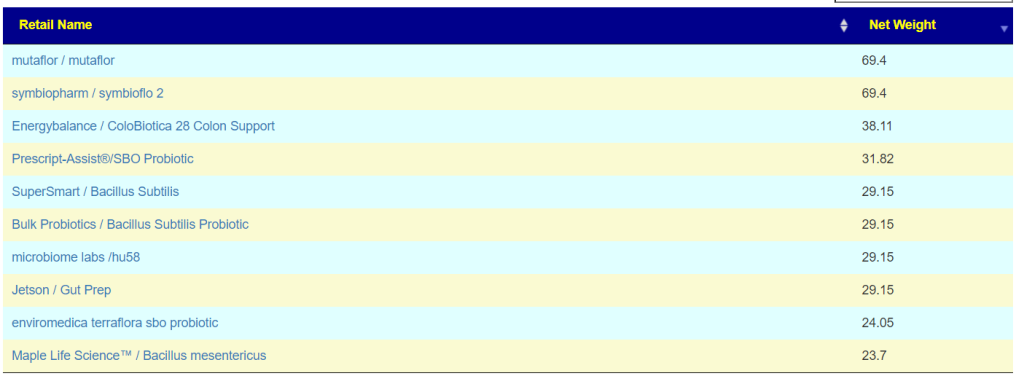






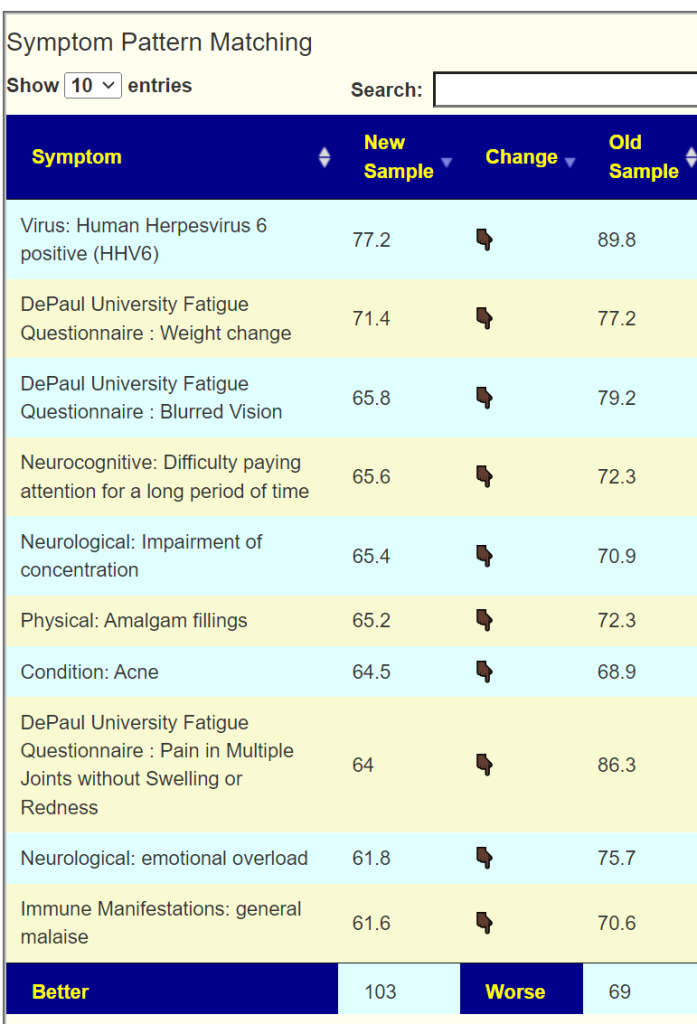

Recent Comments